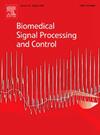通过三维隐式神经函数为小动物脑辐射的聚焦千伏 X 射线剂量核建模
IF 4.9
2区 医学
Q1 ENGINEERING, BIOMEDICAL
引用次数: 0
摘要
精确照射对于小动物如小鼠的基于放射的神经调节和神经肿瘤学至关重要。提出了聚焦kV x射线方法,以实现现有设备难以实现的受限目标尺寸。聚焦x射线照射的治疗计划需要剂量核库来生成剂量图。然而,蒙特卡罗方法的剂量核库生成是耗时和空间消耗。为了优化时空效率,我们提出了一种基于三维隐式神经函数的机器学习方法来模拟小动物脑辐射的聚焦kV x射线剂量核。在大鼠头部幻像模型的基础上,我们定义了一个涵盖范围和分辨率合适的参数空间的库,以覆盖大鼠大脑的大小和结构变化。我们使用基于topas的蒙特卡罗模拟进行数据准备。每个剂量核可以用一个深度参数三元组来表征。隐式神经函数被训练成将具有深度参数三重组的空间坐标映射到相应的剂量值。我们发现隐藏神经层的周期激活函数和坐标的坐标嵌入对于精确建模是很重要的。实验结果表明,我们将训练库从17 GB压缩到2.27 MB,精度很高,并且在测试剂量核中预测剂量核的加速速率为5万倍,这对研究最佳透镜的选择至关重要。这项工作是首次尝试开发用于小动物脑辐射剂量核库建模的机器学习技术。本文章由计算机程序翻译,如有差异,请以英文原文为准。
Modeling focused kV X-ray dose kernels via 3D implicit neural functions for small animal brain radiation
Precise irradiation is critical in radiation-based neuromodulation and neuro-oncology for small animals like mice. The focused kV x-ray approach was proposed to achieve a restricted target size that is difficult for existing devices. The treatment planning of focused X-ray irradiation requires the dose kernel libraries to produce dose maps. However, the Monte Carlo approach for dose kernel library generation is time- and space-consuming. To optimize spatiotemporal efficiency, we propose a machine learning approach based on 3D implicit neural functions to model focused kV X-ray dose kernels for small animal brain radiation. Based on the rat head phantom model, we define a library spanning a parameter space with proper range and resolution to cover the rat brain size and structure variation. We use the TOPAS-based Monte Carlo simulation for data preparation. Each dose kernel can be characterized by a depth parameter triplet. Implicit neural functions are trained to map spatial coordinates with a depth parameter triplet to their corresponding dose values. We find the periodic activation function of hidden neural layers and coordinate embedding of coordinates are important for accurate modeling. Experimental results show that we compress the training library from 17 GB to only 2.27 MB with high accuracy, and it is also shown to predict dose kernels in the testing dose kernels with an acceleration rate of 50,000 times, which is crucial to study the choice of optimal lens. This work is the first attempt to develop machine-learning techniques for modeling dose kernel libraries for small animal brain radiation.
求助全文
通过发布文献求助,成功后即可免费获取论文全文。
去求助
来源期刊

Biomedical Signal Processing and Control
工程技术-工程:生物医学
CiteScore
9.80
自引率
13.70%
发文量
822
审稿时长
4 months
期刊介绍:
Biomedical Signal Processing and Control aims to provide a cross-disciplinary international forum for the interchange of information on research in the measurement and analysis of signals and images in clinical medicine and the biological sciences. Emphasis is placed on contributions dealing with the practical, applications-led research on the use of methods and devices in clinical diagnosis, patient monitoring and management.
Biomedical Signal Processing and Control reflects the main areas in which these methods are being used and developed at the interface of both engineering and clinical science. The scope of the journal is defined to include relevant review papers, technical notes, short communications and letters. Tutorial papers and special issues will also be published.
 求助内容:
求助内容: 应助结果提醒方式:
应助结果提醒方式:


